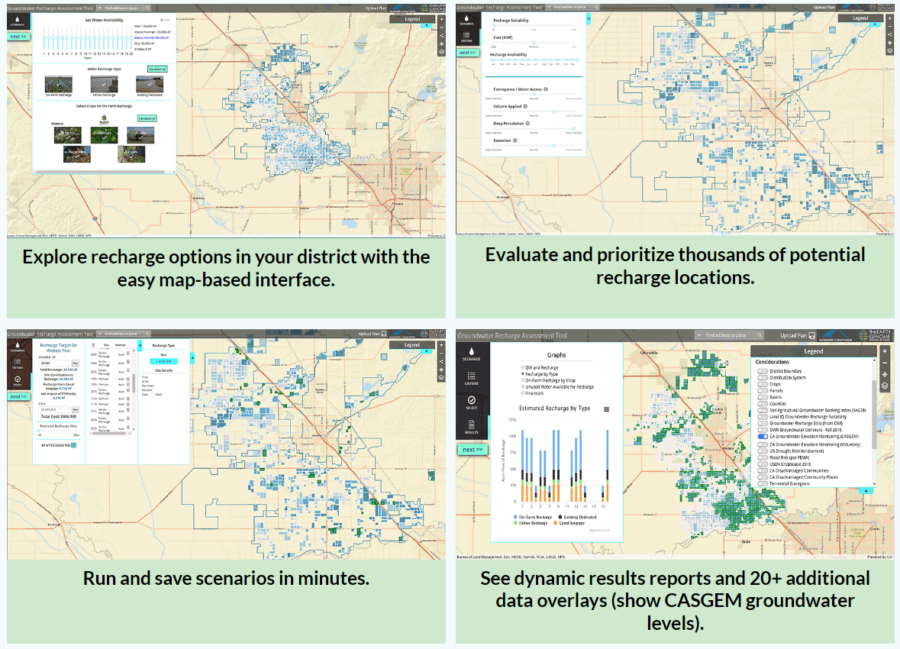
Groundwater depletion is a pressing challenge in California, and sustainable groundwater management has become a key focus for addressing this issue. However, the benefits of recharge often depend on various site-specific factors such as soil and land use type, making a one-size-fits-all approach ineffective. To make informed decisions, groundwater sustainability agencies (GSAs) and water managers need precise data and tools that can guide them in identifying the most opportune locations for recharge. This is where the Groundwater Recharge Assessment Tool (GRAT) comes in.
GRAT, developed by Sustainable Conservation and Earth Genome, is a decision-support tool to enable water managers to evaluate where, when, and how much recharge can occur in a region. It integrates hydrologic, agronomic, and geologic science with the best available data from local, state, and federal sources.
Some of the key features of GRAT include:
- Site-Specific Suitability Analysis. GRAT analyzes site-specific data by considering factors such as soil characteristics, land use, crop types, and conveyance infrastructure. This allows for a more nuanced understanding of the recharge potential in a given location and aids in more efficient resource allocation.
- Diverse Benefits. GRAT aims to provide strategies for replenishing aquifers through recharge that simultaneously focus on benefiting communities, ecosystems, and agriculture, and reducing flood risk.
- See our new Runoff to Recharge StoryMap for strategies on how to practice recharge to provide a broad array of benefits.
- Planning for the Future. GRAT incorporates different climate change conditions and time horizons to help ensure resiliency of plans and projects in the face of a changing climate.
GRAT screenshots demonstrate how the tool can assist water managers in identifying and evaluating groundwater recharge locations. Check out some of the data layers included in GRAT here!
As California grapples with water challenges, innovative tools like GRAT are crucial assets in paving the way for a more sustainable and water-secure future.
For more information and materials on groundwater, visit the NGWA website, and stay tuned for the upcoming installments of our Groundwater Week Blog Series!



